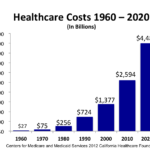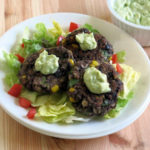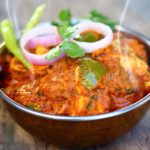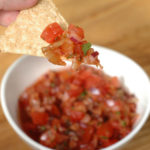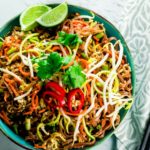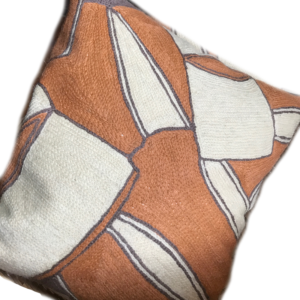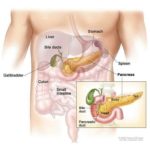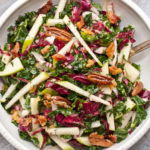
The bacteria in your gut can be one of your strongest allies in getting healthy…or it can be one of your worst enemies. Most people don’t realize it, but what they eat and how they live are changing the makeup of their gut bacteria.
Exciting new studies are coming out every day exploring the connection between gut bacteria and practically every other aspect of human health. The conclusion is clear: if you can change your gut, you can change your life.
Gut bacteria, which number more than 100 trillion cells, have more of an impact on our health than medical experts previously realized. But not all gut bacteria are created equal. Among other things, “good” gut bacteria improve digestion, strengthen the immune system, and manufacture the vitamins your body needs. On the other hand, “bad” gut bacteria can cause digestion nightmares, mental problems, skin conditions, and all kinds of other problems you’ll learn about in just a second.
A healthy gut isn’t made by trying to rid your body of gut bacteria altogether. It’s made by balancing the bacteria—limiting the bad guys and encouraging the good guys to grow. So let’s start at the beginning: how to figure out if your gut bacteria is unbalanced.
Are Your Gut Bacteria Imbalanced? 7 Things to Look for
How can you know if your gut bacteria are out of whack? It isn’t quite as easy as finding out if you have a fever. You can’t just take your gut bacteria’s temperature with a thermometer you bought over the counter. But there are common warning signs that something might be wrong. Keep an eye on them, and you’ll put yourself in the best position to get healthy.
Here’s what to watch out for:
Sign 1. Digestive Issues
When you think of the potential consequences of unhealthy gut bacteria, digestive problems are probably the first things that come to mind. Many doctors will prescribe drugs like Prevacid or generic antacids to help people struggling with these issues, but those medications only address surface level symptoms. They don’t get to the root cause of the problem, which is unhealthy gut bacteria. If you’re dealing with any of the following, you might have an unhealthy gut:
Sign 2: Mental Issues
Did you know the health of your gut could affect the health of your brain? It’s true. Scientists have already discovered that gut bacteria produce neurotransmitters. Now, they’re focused on another trend: people with certain mental disorders also tend to have disturbances to their gut bacteria.
Believe it or not, your gut could be to blame for certain mental disorders.
If you have any of these mental issues, your gut bacteria might be to blame
Depression and anxiety
Brain fog
OCD
Autism
Sign 3. Vitamin and Mineral Deficiencies
vitamin-deficiency.jpg
A healthy gut also plays an important role when it comes to helping your body produce and synthesize vitamins and minerals. When your gut bacteria is out of whack, your body has a harder time getting enough of the following essential vitamins and minerals:
If you’re deficient in any of the above (you can find out by getting a simple physical from your doctor), you might have an unhealthy gut.
Sign 4: Antibiotics
Sign 5: Chronic, Unmanaged Stress
Stress can wear you down, make you anxious, and increase your blood pressure… and it can also wreak havoc on your gut! Stress is inevitable, no matter how hard we try to avoid it. That isn’t an issue — until you let it go on for too long without managing it. Unmanaged stress raises cortisol levels, which can stop the gut from working properly. If you’ve been stressed for the past few months (or years, or decades) but haven’t acted to manage your stress, you’re more likely to have an unhealthy gut.
Sign 6: Skin Conditions
There’s been a lot of confusion about skin conditions over the years. Much of it comes from the common (but misguided) idea that the symptoms of a condition must appear in the same spot as the condition itself. For many skin conditions, the problem isn’t with the skin itself. It’s with an unhealthy gut. If you have any of these skin conditions, it could be due to unbalanced gut bacteria:
Acne
Rosacea
Psoriasis
Eczema
Sign 7: Autoimmune Diseases
Autoimmune diseases can be difficult to manage because the body is literally attacking itself. It can be even tougher to spot the source of the problem and address it there. But more research is emerging linking autoimmune diseases to unhealthy guts. If you’re dealing with any of the following, you just might be able to make your symptoms disappear by taking care of your gut:
Hashimoto’s
Rheumatoid arthritis
Inflammatory bowel disease
How to Balance Your Gut Bacteria in 4 Simple Steps
If any of the warning signs above look familiar to you, there’s good news! You can take action to improve the health of your gut. Doing so can prevent new medical conditions from arising and even reverse conditions that have bothered you for years.
Ready to get started today? Here’s how to balance your gut bacteria in four simple steps:
Step 1. Avoid Toxins
If you wanted to put out a fire, adding gasoline would be worst thing you could do! Unfortunately, that’s exactly what a lot of people with unhealthy guts are doing. They’re continuing to eat and live in a way that kills good bacteria, encourages bad bacteria to grow, and breaks down the integrity of their gut lining. Most of them don’t even realize they’re doing it.
The first step to reversing this trend is to avoid toxic foods. These include:
Grains
Conventional grain-fed dairy
Sugars, including fructose (check out 12 Painless Ways to Cut Sugar Out of Your Diet)
Unhealthy oils
If you’re already following a Paleo lifestyle, you’ve pretty much taken care of this step. Stick to a diet focused on vegetables, animal protein, and fruits, and you’ll create a gut environment that’s friendly for good bacteria and unfriendly for bad bacteria.
Avoid sugar, drugs and other toxins to maintain a healthy gut.
It’s also a good idea to avoid other modern toxins. Watch out for:
Non-steroidal anti-inflammatory drugs (NSAIDs) like Advil and Ibuprofen
Antibiotics (as much as possible)
Pesticides
Step 2. Eat Fermented Foods
kimchi.jpgAvoiding toxic foods and environmental toxins is a great start, but not quite enough for optimal health. It’s time to get proactive about encouraging good gut bacteria to flourish. One of the best ways is to eat more fermented foods. These foods, commonplace in our ancestors’ diets, are full of good gut bacteria.
Great fermented foods include:
Going from eating no sauerkraut to say… two or three bowls a day might sound like a good idea. But resist the temptation! Adding too many fermented foods too quickly can create some nasty side effects. Start small—a teaspoon or two a day and work your way up to give your gut time to adjust.
Step 3. Take Probiotic Supplements
In addition to eating fermented foods (a great natural source of good gut bacteria), you can restore your gut health faster by taking a daily probiotic supplement. Our ancestors were a lot less concerned with hygiene than we are. This actually helped them pick up plenty of good gut bacteria along with the soil and other dirty things they encountered. You can use probiotic supplements to “make up” for that lost good bacteria. No eating dirt needed!
There’s a wide range of probiotic supplements available. And just like with gut bacteria, some are better than others. Dr. Tim Gerstmar laid down some excellent guidelines on which supplements to focus on:
Stay away from “bargain bin” prices. You get what you pay for.
Two reputable brands are Jarrow and Klaire Labs.
Make sure they’re potent. Dr. Gerstmar recommends at least 8 billion/dose.
Look for supplements that contain strains of Lactobacillus and Bifidobacterium.
Our recommended probiotic: Biotrust Pro-X10
Step 4. Manage Your Stress
One of the most powerful things you can do to improve your gut health (besides changing your diet) is to make “stress management” a priority. There isn’t a one-size-fits-all method to do this. The key is to pick something you enjoy and stick with it. Making time to manage your stress — whether you feel stressed or not — will reduce inflammation, lower cortisol levels, and improve your gut health.
Get plenty of sleep and take time to reduce your stress levels to improve gut health.
And make sure to get enough sleep! A sleep deficit raises cortisol levels (and harms the gut) just like any other type of stress. Shoot for at least 7 hours a night.
Change Your Gut, Change Your Life
More science is emerging every day connecting issues with the gut to issues throughout the body and mind. That’s good news for you! With knowledge and smart action, you can quite literally heal yourself from the inside out. The recipe for a healthy gut is simple. Avoid toxic foods and substances, add in some fermented foods and probiotics, and make managing your stress a priority. It won’t happen overnight, but it will happen. Changing your gut just might be the first step to changing your life.
